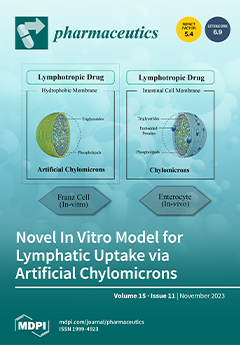This study explores the potential of a natural composite formulation known as ED, consisting of
Ecklonia cava (
E. cava, family: Lessoniaceae) and
Chrysanthemum indicum Linne (
C. indicum, family: Asteraceae), in alleviating lung inflammation induced by fine particulate matter (PM
2.5
[...] Read more.
This study explores the potential of a natural composite formulation known as ED, consisting of
Ecklonia cava (
E. cava, family: Lessoniaceae) and
Chrysanthemum indicum Linne (
C. indicum, family: Asteraceae), in alleviating lung inflammation induced by fine particulate matter (PM
2.5). Initial assessments confirmed that neither ED nor one of its components, dieckol, exhibited cytotoxic effects on A549 cells. Subsequently, the impact of ED and dieckol on
MUC5AC gene expression in A549 cells stimulated by phorbol 12-myristate 13-acetate (PMA) was investigated, revealing promising results that demonstrated a dose-dependent inhibition of
MUC5AC gene expression. The study also delves into the underlying mechanisms, demonstrating that ED and dieckol effectively suppressed the phosphorylation of mitogen-activated protein kinases (MAPKs), including JNK, ERK, and p38, which are known to be involved in the regulation of
MUC5AC gene expression. In in vivo experiments using a PM
2.5-induced pulmonary inflammation mouse model, the research findings showed that ED mitigated cellular accumulation in the airways, leading to a significant reduction in the total cell count in bronchoalveolar lavage fluid (BALF). Moreover, ED exhibited protective effects against PM
2.5-induced pulmonary damage, characterized by reduced inflammatory cell infiltration and decreased mucus secretion in pulmonary tissues. Additionally, ED’s anti-inflammatory properties were evident in its ability to decrease the levels of key inflammatory cytokines,
TNF-α and
IL-6, both in the serum and lung tissue of the PM
2.5-induced pulmonary inflammation mouse model. These findings suggest the potential of ED as a therapeutic agent for inflammatory respiratory diseases.
Full article






